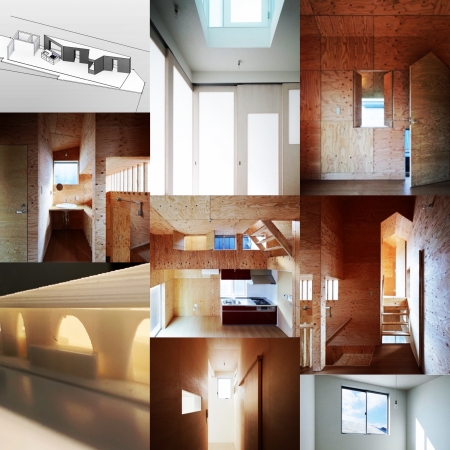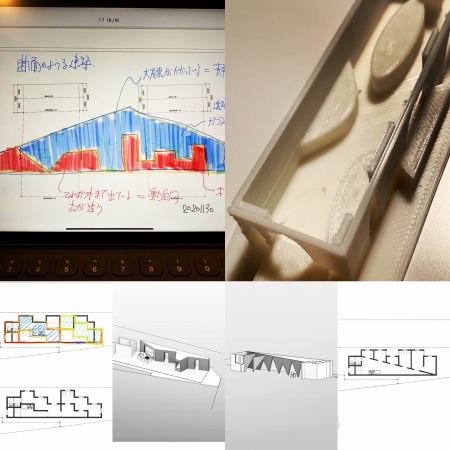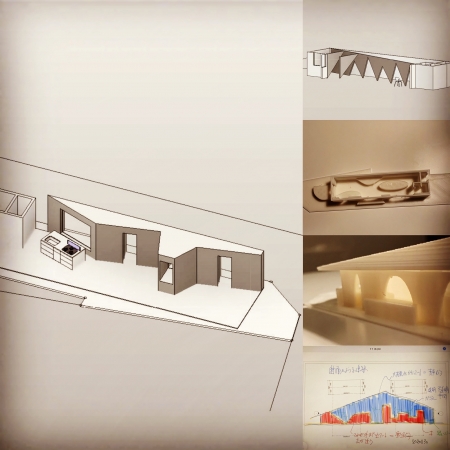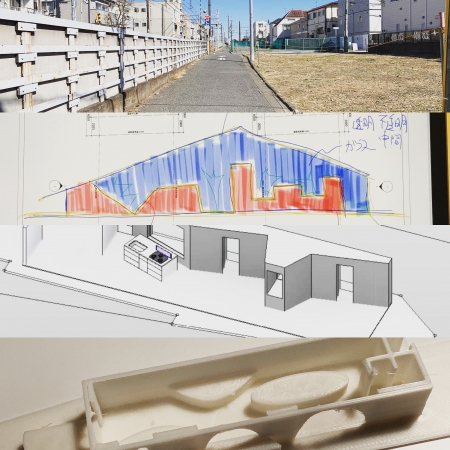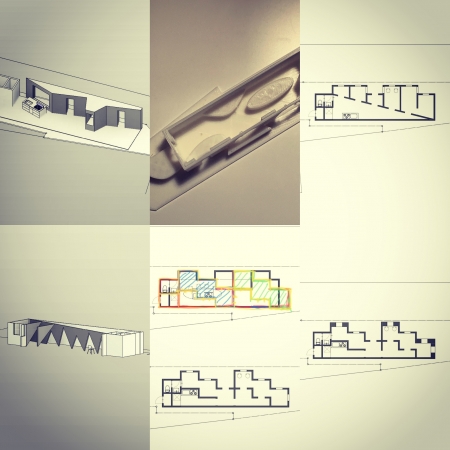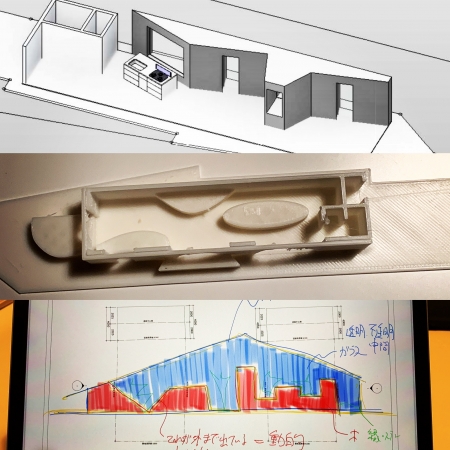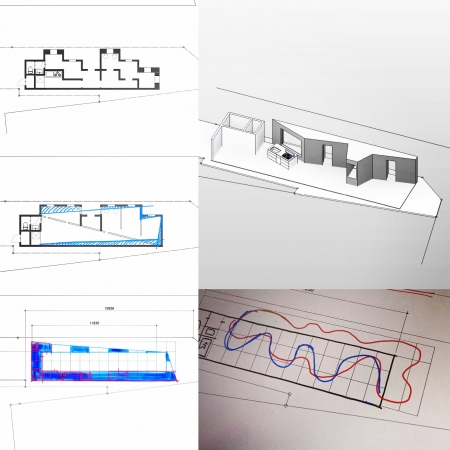窓と人のつながり
窓は外の世界と内の世界をつなぐ役目だとすると、窓の大きさが変化すれば外と内のつながり方も変化する。壁面いっぱいの窓ならば、外と内はシームレスにつながり、窓の大きさが極端に小さければ、外と内のつながりはほとんど無くなる。窓の大きさの度合いに応じて外と内のつながり具合を調整できる。逆に言えば、外と内のつながり具合で窓の大きさが決まる。
窓を単なる開口部だとすれば、外の世界に向けられるだけでなく、内の世界同士のつながりの形成にも用いることができる。開口部が大きくなり壁面いっぱいになれば、壁が無い状態であり、開口部が極端に小さくなれば、単なる小窓になり、装飾か空気を通すためか、大きさにより開口部の意味合いも変わる。
窓や開口部のつながりや意味合いは、それ自体が建築の一部や物として起こす現象だが、その現象を体現する人がいてさらにつながりや意味合いが深まったり、拡散されたりする場合がとても面白いと思う。
"Connection between windows and people"
Assuming that the window serves to connect the outside world and the inside world, the way the outside and the inside are connected changes as the size of the window changes. If the window is full of walls, the outside and the inside are seamlessly connected, and if the size of the window is extremely small, the connection between the outside and the inside is almost eliminated. The connection between the outside and the inside can be adjusted according to the size of the window. Conversely, the size of the window is determined by the connection between the outside and the inside.
If a window is just an opening, it can be used not only to point to the outside world, but also to form a connection between the inside worlds. If the opening becomes large and the wall is full, there is no wall, and if the opening becomes extremely small, it becomes a mere small window, and the meaning of the opening changes depending on the size, whether it is decoration or air passage. ..
The connection and meaning of windows and openings is a phenomenon that itself occurs as a part of architecture or an object, but I think it is very interesting if there are people who embody that phenomenon and the connection and meaning are deepened or diffused. ..

